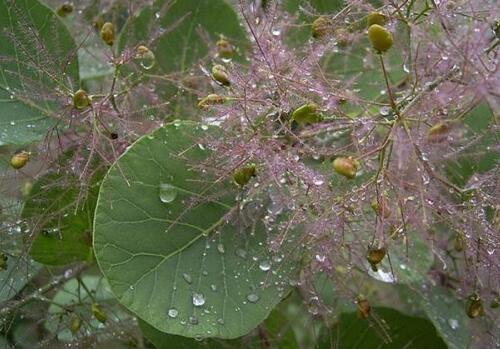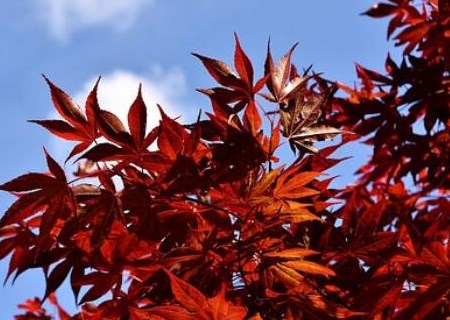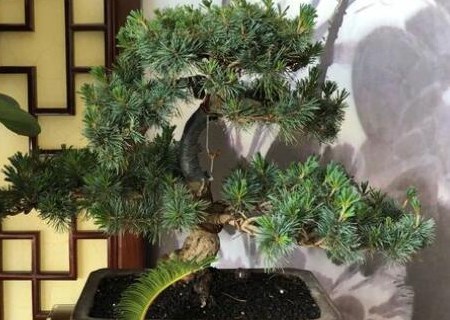How much is the price of Euphorbia angustifolia? In what season is the survival rate high? What are the planting methods? Basin
Phellodendron chinense generally refers to Phellodendron amurense, also known as Phellodendron chinense, Phellodendron chinense, Populus tomentosa, Molinluo, Populus tomentosa, Ebony, Tobacco, is a good afforestation tree species. How much is the price of the yellowtail tree? In what season is the survival rate high? What are the planting methods? How to trim and maintain bonsai? From Jiujiang nursery stock base, we know that Huangqi is an important ornamental red leaf tree species in China. The leaves turn red and dazzling in autumn, and the famous Xiangshan red leaves in Beijing are this tree species. In the garden, it is suitable to be planted in lawns, mounds or hillsides, and can also be mixed in other tree groups, especially evergreen trees. The pedicel of the sterile flower that did not fall long after the yellow pedicel was pink and feathered to form a cloudy and misty landscape on the branches. Huangqi is also a good afforestation tree species, which varies from region to region, generally about 75.

In what season is the survival rate high when the tree is planted?
The main results are as follows: 1 Phellodendron chinense is generally in early spring or late autumn, which is the most suitable for transplanting, and the survival rate is relatively high. Before the big tree transplant, the big tree is generally watered 3-5 days in advance. When digging, try to keep the big soil ball and keep the soil ball intact, retain some main roots as far as possible, treat the root wound in time, spray the root with Zhongwei Kuaihuo forest rooting solution, remove the withered branches and prune the branches as far as possible, spray Happy forest anti-transpiration agent to reduce water loss.
2. After digging, big trees should be quickly transplanted, fixed in the process of transportation, prevent bark damage, replenish water and nutrition with happy forest needle solution, arrive at the transplanting site, and disinfect the soil. the depth of the soil ball of the transplanted trees is determined according to the local climate and weather conditions.
After transplanting, the roots should be treated with Happy Forest Fusheng Ling, and the roots should be irrigated with Happy Forest rooting liquid to stabilize the trees, prevent the trees from shaking, and the trees will die. 3. Tree trunks and branches should be sprayed with Happy Forest anti-transpiration agent to reduce water loss and inject drip solution into big trees at the same time. In particular, it is reminded that the first watering must be thoroughly watered, so that there is basically no problem for the big tree to survive.
What are the planting methods of Phellodendron chinense?
Phellodendron chinense is mainly sown and propagated, and ramets and roots can also be inserted.
From January to July, the seeds can be collected after the fruit is ripe, and the seeds can be sown after 40-60 days of wet sand storage. The cold resistance of seedlings is poor, so it is necessary to cover leaves and straw before winter. It can also overwinter in sand after seed collection and sow seeds in the following spring.
2. Select the sandy loam soil with high topography, convenient irrigation, deep and fertile soil layer and good drainage as the seedling land. When the soil viscosity is high, it can be combined with soil preparation to add an appropriate amount of fine sand or vermiculite for soil improvement, do not choose heavy soil waterlogging land.
3. The suitable time for soil preparation is the first and middle of March. When preparing the soil, apply sufficient base fertilizer, apply rotten organic fertilizer 3000kg per 667m2, and apply 30~50kg compound fertilizer to remove grass roots, sundries and so on.
4. 3-4 days before sowing, disinfect the soil with 40% brown marlin with 50 times water or 50% carbendazim 50% wettable powder 1.5 g per square meter, and 50~100kg ferrous sulfate per 667m2 to prevent seedling blight. In addition, 50% phoxim 800x solution was applied with 200kg per 667m2 to kill underground pests.
5. The seedlings of Phellodendron chinense are mainly raised in low bed. In order to facilitate daylighting, the bed is made in the north-south direction, the width of the bed is 1.2m, depending on the topographic conditions, the bed surface is lower than the trail 10~15cm, and the suitable sowing time is from late March to early April. Disinfect the soil with formalin or carbendazim 3-4 days before sowing and fill with bottom water. After the water dries, 33cm according to the row spacing, pull the wire to open the ditch, spread the sand mixture sparsely, and the seed amount per 667m2 is 6~7kg. After planting, cover the soil with about 1.5~2cm, gently press, flatten, and then cover with plastic film. At the same time, drainage ditches are opened around the seedbed to facilitate drainage in autumn. Be careful not to water the seeds before they germinate. Generally speaking, the seedlings come out 2-3 weeks after sowing.
6. Huangqi has a strong sprouting ability. before sprouting in spring, select the root seedlings growing on the outside of the trunk, dig up the roots, plant them in the nursery, and then plant them.
How to trim and maintain the Huangqi bonsai?
The method of pruning the tree:
1. Timely and reasonable sharpening
In order to inhibit the growth of bonsai and promote the balanced development of other lateral buds, the tender head of the branch can be removed. Is to pinch or cut off the top of its main stem or side branches by hand to break its top advantage, so that the lower axillary buds can be sent out, prevent the growth of branches, let it grow, and gradually form a good-looking tree shape.
2. Pick the bud
To pick the bud is to remove the new bud with your hand. Only by taking off its small buds and saving more good nutrition, can the bonsai grow better. One of the buds must be removed when the buds are newly issued, and pay attention to the position of the buds. If it is inappropriate, it will affect the shape of the tree.
3. Picking leaves
For the bonsai, we have to take off the old leaves when we pick the leaves, so as to make them keep sending new leaves. In this way, we can always enjoy their new leaves.
The bonsai of Huangqi in autumn
4. Pruning
Bonsai-style yellowtail will often grow many new branches, in order to maintain a good-looking shape, it should be pruned frequently. Pruning should be decided according to the shape of the tree, generally those that affect the beauty of the dead branches, parallel branches, and cross branches should be cut off in time.
5. Repair the root
When you turn the bonsai, you should trim its roots properly. If the roots are particularly dense, you should prune more, cut off the redundant old roots, and then loosen the soil and fertilize the roots properly after pruning, which can promote the new roots to grow better.
Maintenance:
1. The choice of site. They like light, should be placed in a place with plenty of sunshine and good ventilation, generally can be placed outside. However, in hot summer or cold winter, it is generally necessary to move indoors.
2. Watering and moisturizing. Huangqi is not resistant to moisture, so we must be careful when watering it. Don't accumulate too much water in the basin, just make sure the soil is moist. Another thing to pay attention to is to ensure that the air around the bonsai is moist.
3. Pay attention to fertilization. Huang Huan likes nutrition, so potted plants should not be fertilized, otherwise it will accelerate its growth and affect the visual effect of viewing.
4. Shaping and pruning. Phellodendron chinense has strong growth ability and needs pruning when it germinates in spring every year. It is necessary to ensure that its branches and leaves are not too luxuriant and dense. At the same time, the branches should be properly tied to ensure the beauty of the pot plant as a whole.
5. prevention and control of diseases and insect pests. For the common diseases and insect pests such as blight and aphids, we must detect them as soon as possible and control them in time.
Time: 2019-03-17 Click:
- Prev

What are the planting methods of Japanese red maple bonsai in the disease-free family? Will the leaves fall in winter?
Japanese red maple is a small tree or shrub of the genus Acer in the disease-free family. There are many varieties of horticulture, with a variety of leaf colors, tree shapes and leaf shapes, and are widely cultivated in many places in the world. So do you know the planting methods of Japanese red maple bonsai? Will the leaves fall in winter? Planting method of Japanese red maple bonsai
- Next

What are the breeding methods and matters needing attention of Luo Han Song (alias Taxodium fortunei)? What's the use? How much is one?
Luohansong, alias Taxodiaceae, Pinus elliottii, evergreen coniferous trees, distributed in many provinces and regions of China, cultivated in gardens as ornamental trees. So do you know the breeding methods and points for attention of Luohansong? What's the use? How much is a seedling? We know the latest price at the Luohansong market.
Related
- Fuxing push coffee new agricultural production and marketing class: lack of small-scale processing plants
- Jujube rice field leisure farm deep ploughing Yilan for five years to create a space for organic food and play
- Nongyu Farm-A trial of organic papaya for brave women with advanced technology
- Four points for attention in the prevention and control of diseases and insect pests of edible fungi
- How to add nutrient solution to Edible Fungi
- Is there any good way to control edible fungus mites?
- Open Inoculation Technology of Edible Fungi
- Is there any clever way to use fertilizer for edible fungus in winter?
- What agents are used to kill the pathogens of edible fungi in the mushroom shed?
- Rapid drying of Edible Fungi

